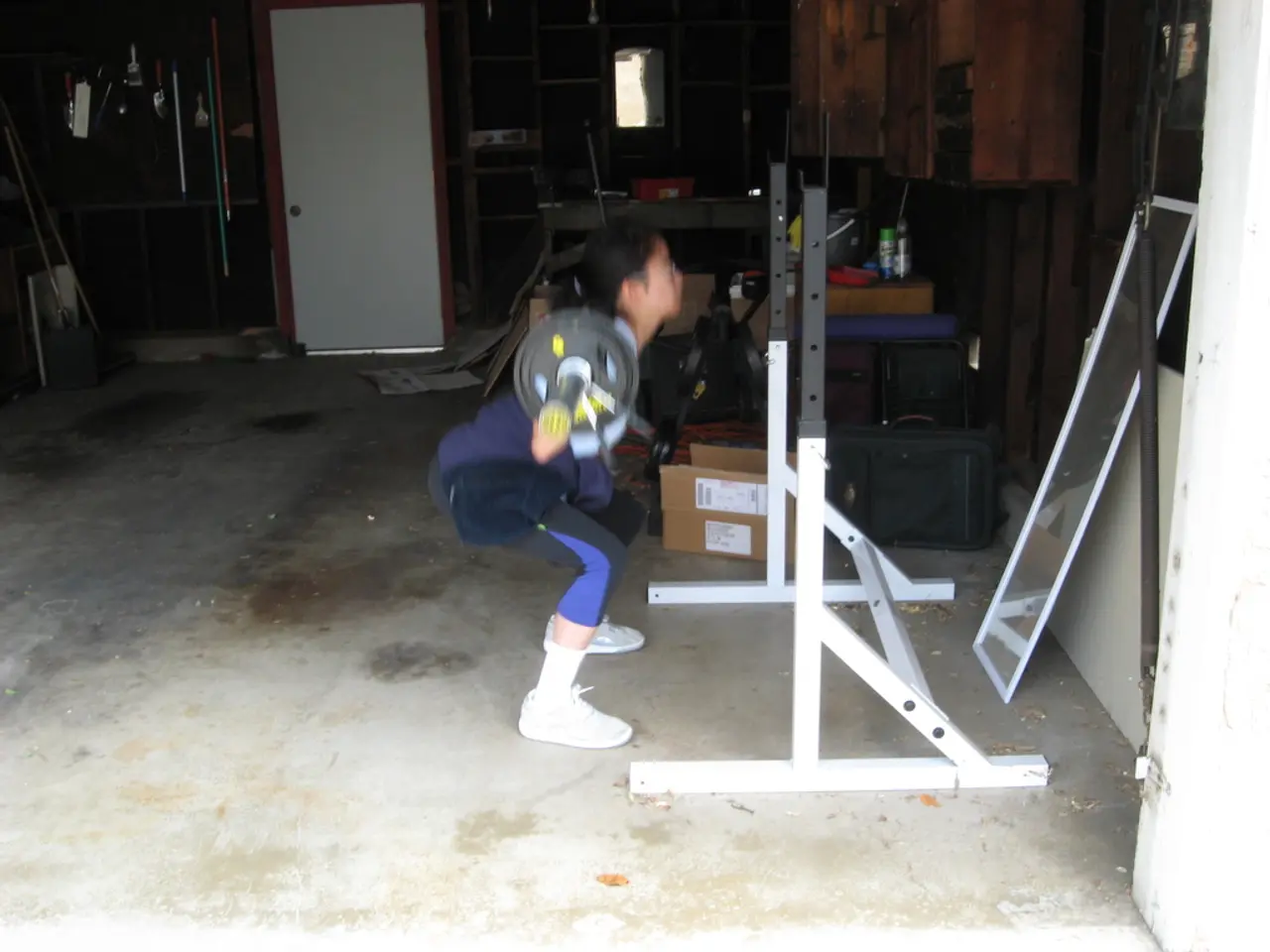Essential exercises for a home running routine, as suggested by a physical therapist
=====================================================================
In the world of running, Adrian D'Costa, a physical therapist, emphasizes the importance of functional strength training for runners. This approach helps build strength without overloading the system, reducing injury risk, and enhancing running performance.
Key exercises include walking lunges with trunk twists, single-leg Romanian deadlifts, and anti-rotational core exercises. These workouts focus on improving unilateral leg strength, core stability, balance, and mobility, all essential for running performance.
For beginners, D'Costa suggests starting with 3-4 sets of 8-12 reps for calf raises, squats, and deadlifts. As you progress, the numbers of sets and repetitions should be adjusted to maintain consistency and progression.
Walking lunges with trunk twists build unilateral leg strength and engage the core, especially the obliques. Beginners should perform 15-20 steps per leg, controlling movement slowly and deliberately to mimic running demands. As form improves, a medicine ball or kettlebell can be added for added resistance.
Single-leg Romanian deadlifts enhance single-leg balance, hamstring flexibility, hip and glute strength, crucial for running performance. Beginners should progress through variation stages to master technique before adding resistance.
Anti-rotational core exercises strengthen the torso to stabilize hips and spine, reducing injury risk and maintaining form during fatigue. These exercises target the obliques and deep core muscles, important for resisting harmful trunk rotation during running.
Goblet squats bolster the quadriceps muscles on the front of the thighs and can be performed with a dumbbell held close to the chest. Romanian deadlifts, on the other hand, help keep the injury-prone hamstrings strong yet supple and can be performed with dumbbells, lowering the weights to mid-shin height. The core should be engaged during Romanian deadlifts.
Performing calf raises can be made harder by standing on a step or adding an external load. This exercise helps develop strength and resilience in the lower legs.
D'Costa emphasizes the importance of tempo and tension during all strength exercises. Strength training plays a critical role in reducing injury risk and enhancing running performance.
When adding strength work to running training, timing is crucial to avoid an overwhelming increase in overall load. Begin strength training during base building with higher reps and foundational exercises. Shift to power-focused, sport-specific movements approaching race season. Maintain strength with reduced volume during peak running phases. Schedule strength sessions on easy run days or after harder running sessions to improve fatigue resistance while maintaining good form.
A balanced, progressive approach improves running economy, reduces injury risk, and enhances overall performance. With these recommendations in mind, runners can take their training to the next level and achieve their goals.
References:
- Strength Training for Runners: A Comprehensive Guide
- Strength Training for Runners: A Systematic Review
- Functional Strength Training for Runners: A Practical Guide
- The Role of Functional Strength Training in Running Performance
- In the realm of fitness-and-exercise, Adrian D'Costa highlights the significance of science-backed strength training for sports like running, enhancing performance and reducing injury risk.
- As sports-analysis reveals, functional strength trainingworkouts, such as goblet squats, Romanian deadlifts, and anti-rotational core exercises, focus on improving health-and-wellness aspects like unilateral leg strength, core stability, balance, and mobility essential for optimal sports performance.
- References from authoritative sources like "Strength Training for Runners: A Comprehensive Guide" and "The Role of Functional Strength Training in Running Performance" provide insights on the importance of strength training not just for running, but for overall fitness-and-exercise and health-and-wellness.




